
Thanks to less announced changes in iOS 18you have more iPhone controls at your fingertips than ever before, and you don’t even have to unlock your phone to use them.
As part of Apple’s push to add more customization options in this year’s software update, iOS 18 gives you the ability to change the two controls at the bottom of your iPhone’s lock screen. Until now, the controls for turning on the flashlight and launching the Camera app were locked in place. But starting in iOS 18, you can replace these with a seemingly unlimited number of keyboard shortcuts in Control Center.
This change is especially welcome if you have a iPhone 16as all four models have both Action and Camera controls buttons. You can program the former to handle shortcuts, like controlling the flashlight, for example, while the latter takes you straight to the camera. That gives you total freedom to create those lock screen controls something you want. (Owners of both iPhone 15Pro models also get some of that benefit, as their devices have an action button.)
There’s just one question: Which Control Center shortcuts deserve a permanent place on your iPhone’s lock screen?
That’s a matter of personal taste, of course, as one person’s essential shortcut is another’s waste of space. But knowing which Control Center shortcuts are available to you is half the battle. I tested several combinations of shortcuts on an iPhone 15 Pro running iOS 18, and these are the lock screen shortcuts I found to be the most valuable.
Customize your lock screen controls
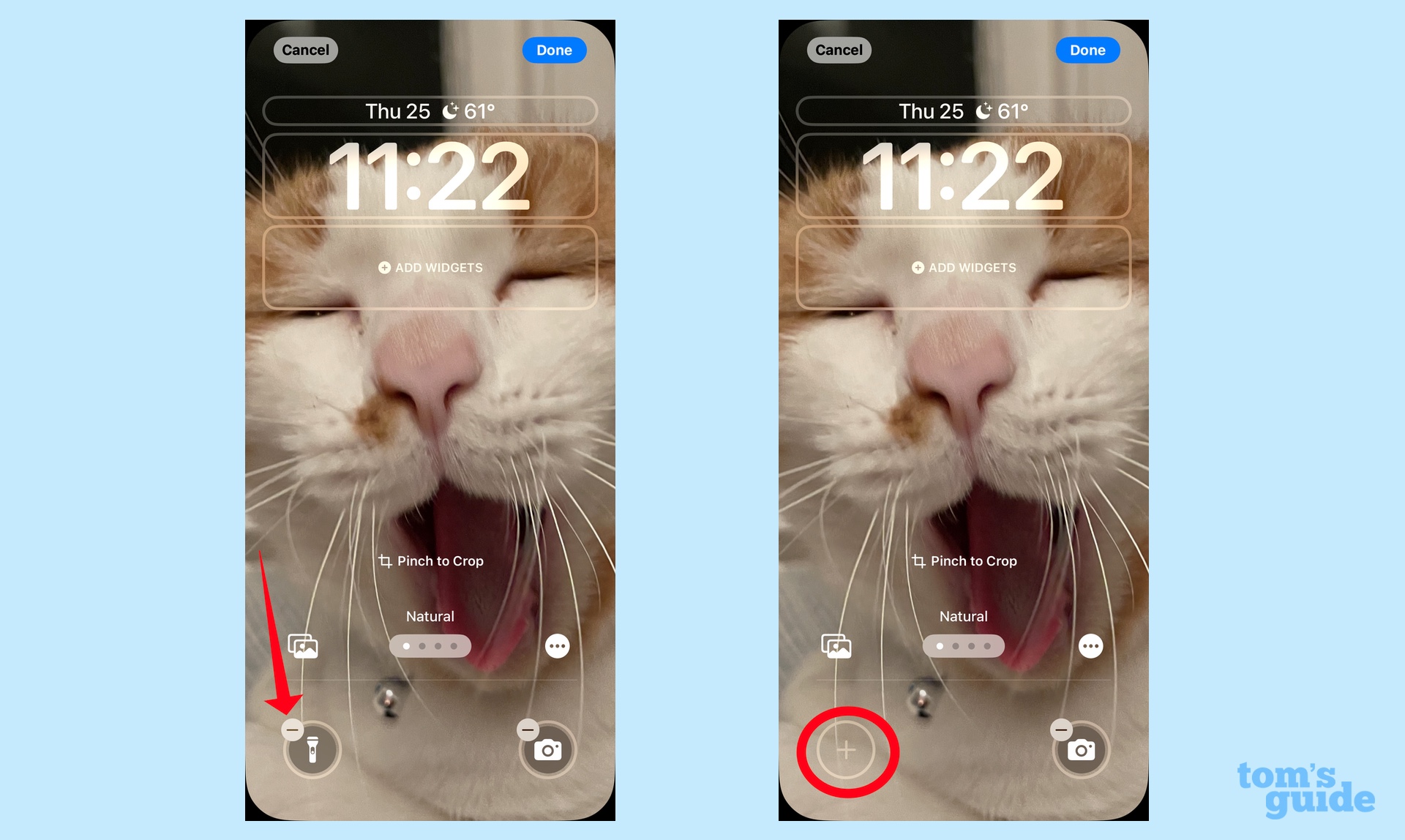
(Image credit: Future)
We have a guide with us how to edit the control shortcuts on your iOS 18 lock screenbut the quick and easy version is that you change these controls as part of the process for customize your lock screen – something you’ve been able to do since iOS 16 came out two years ago.
Just press and hold your lock screen and tap the Customize button that appears. Once you’ve selected the lock screen you want to edit, look down at the bottom of the screen, where the shortcuts to Control Center are located. Tap the minus button at the top of the shortcut you want to customize, followed by the plus button to add a new control.
You will then see a fairly long list of possible Control Center shortcuts that you can add to the open space on your lock screen. At the top you’ll see about 14 commonly used shortcuts, followed by a list of shortcuts organized by category. There is also a search bar if you know the specific shortcut you want to add.
Which shortcuts would make a good addition to your lock screen is what we want to discuss here. Read on for my nine favorites.
Best iOS 18 Lock Screen Shortcuts
Silent mode
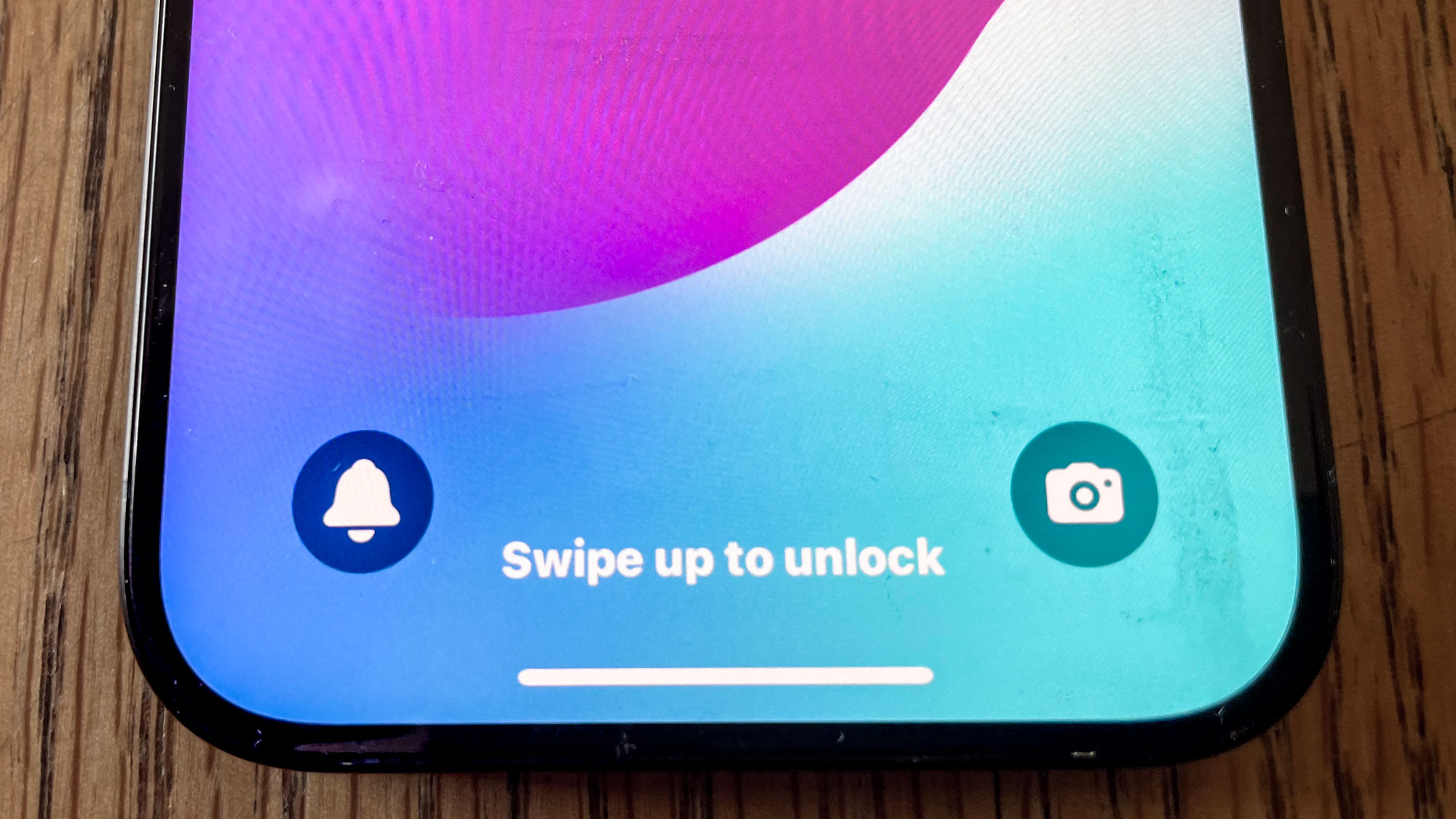
(Image credit: Future)
My colleague Josh Render mourns the loss of the mute switch partly in favor of the action button because he always wants to be able to turn his phone off with a tap – something he can’t do if the action button is assigned to another task. Maybe I can interest Josh and others like him in the silent mode shortcut.
Silent mode is located under the Sounds heading and does exactly what it says on the tin. Tap that button on your lock screen and your phone won’t ring. It’s a really handy way to keep your phone steady right before a movie or meeting, without having to dig into the settings.
Airplane mode
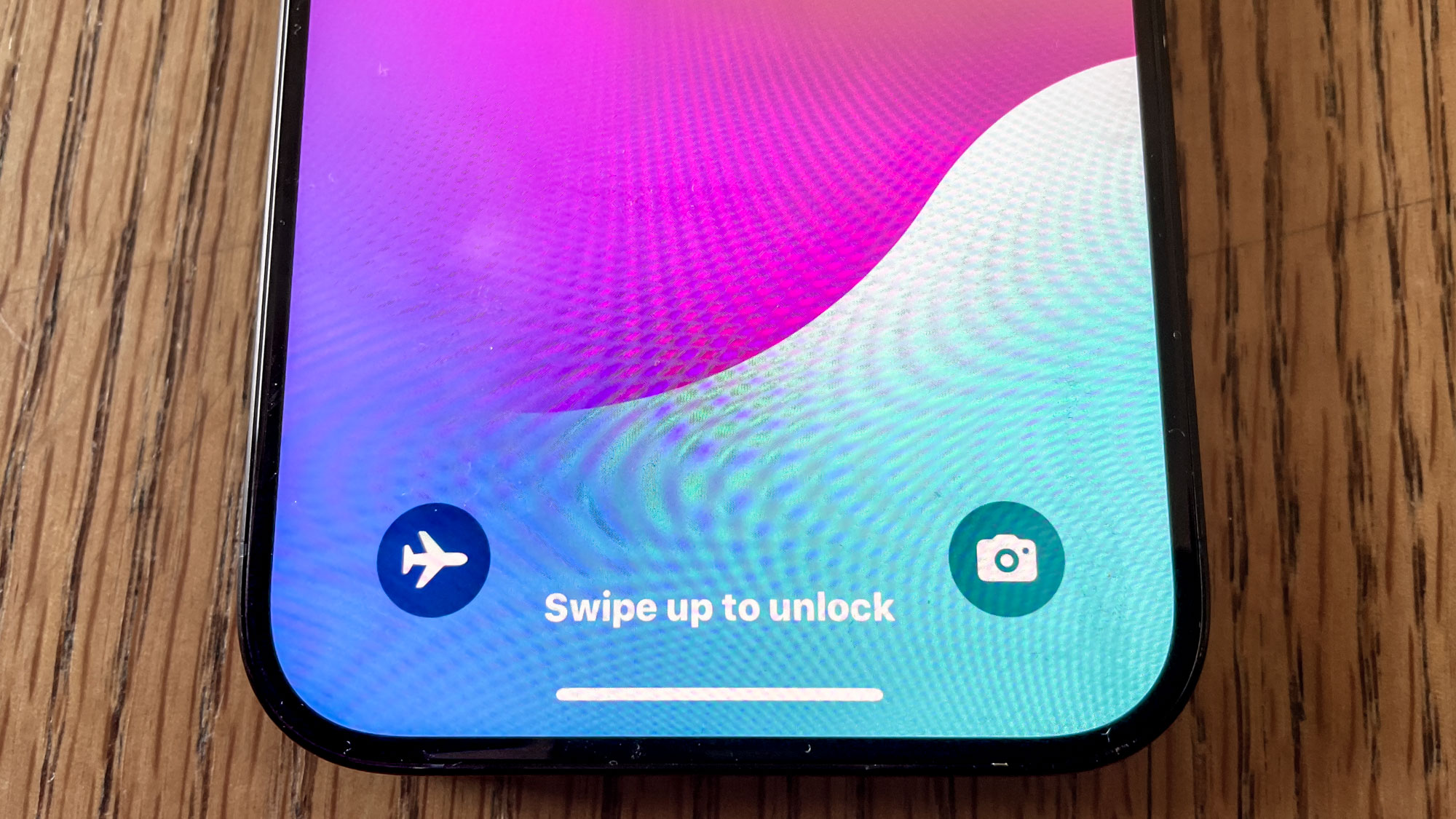
(Image credit: Future)
Do you travel a lot, for work or pleasure? Then you’re probably familiar with the preflight ritual of swiping down from the top left corner of your iPhone screen to open Control Center, where there’s a prominent Airplane Mode button that you can toggle on and off.
However, head to the Connectivity section of the lock screen shortcuts and you can add an Airplane Mode button directly to your lock screen. You don’t have to swipe anymore; a simple tap fulfills the flight crew’s request to end all mobile connections just before takeoff.
Translate
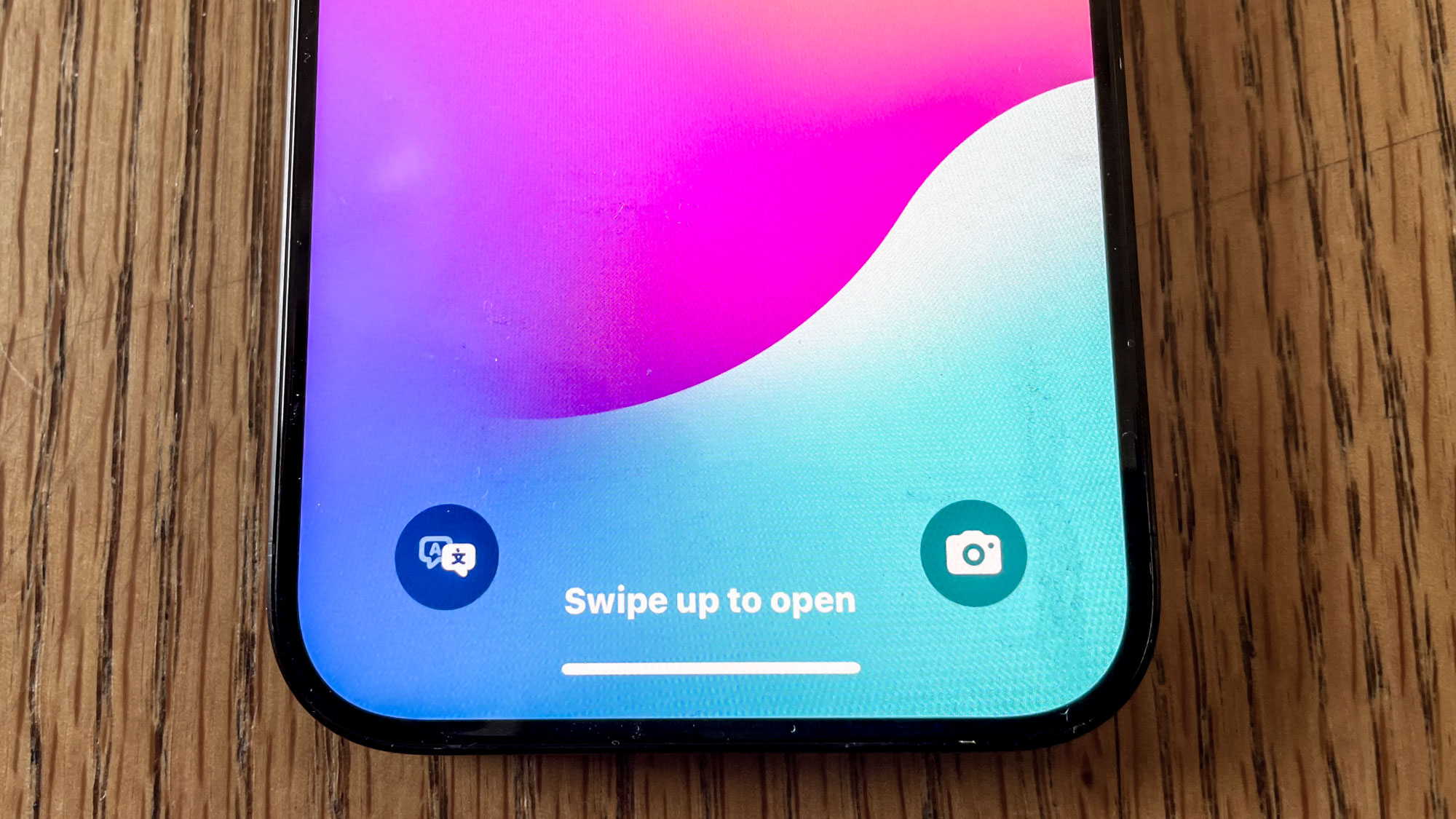
(Image credit: Future)
Here’s another handy lock screen shortcut for travelers who find themselves in other parts of the world where their native language doesn’t match the local language. The Translate keyboard shortcut brings up a tool that lets you speak and have your words translated into a preset language, with an audio translation playing automatically.
This requires some setup beforehand, as you’ll need to go into the built-in Translate app on your phone and set which language you want things translated into. But once that’s established, the Translate keyboard shortcut is ready to overcome any language barriers.
While using it, I’ve found that the lock screen shortcut works best when translating words or short sentences. With longer sentences there is often a timeout before you hear the translation. Perhaps that’s something Apple can adjust in a future iOS 18 update, now that translation tools have been brought to the lock screen.
Recognize music

(Image credit: Future)
Apple bought Shazam six years ago and integrated that music recognition service into its own offering. That now extends to your lock screen in the form of a Recognize Music shortcut.
Add that shortcut to your lock screen from the Sounds category, and the next time you hear a song you can’t quite identify, just press the button at the bottom of your lock screen. Shazam will work its magic and give you not only the song title, but also a link that takes you to the song within the song Apple music app on your phone.
Personal hotspot
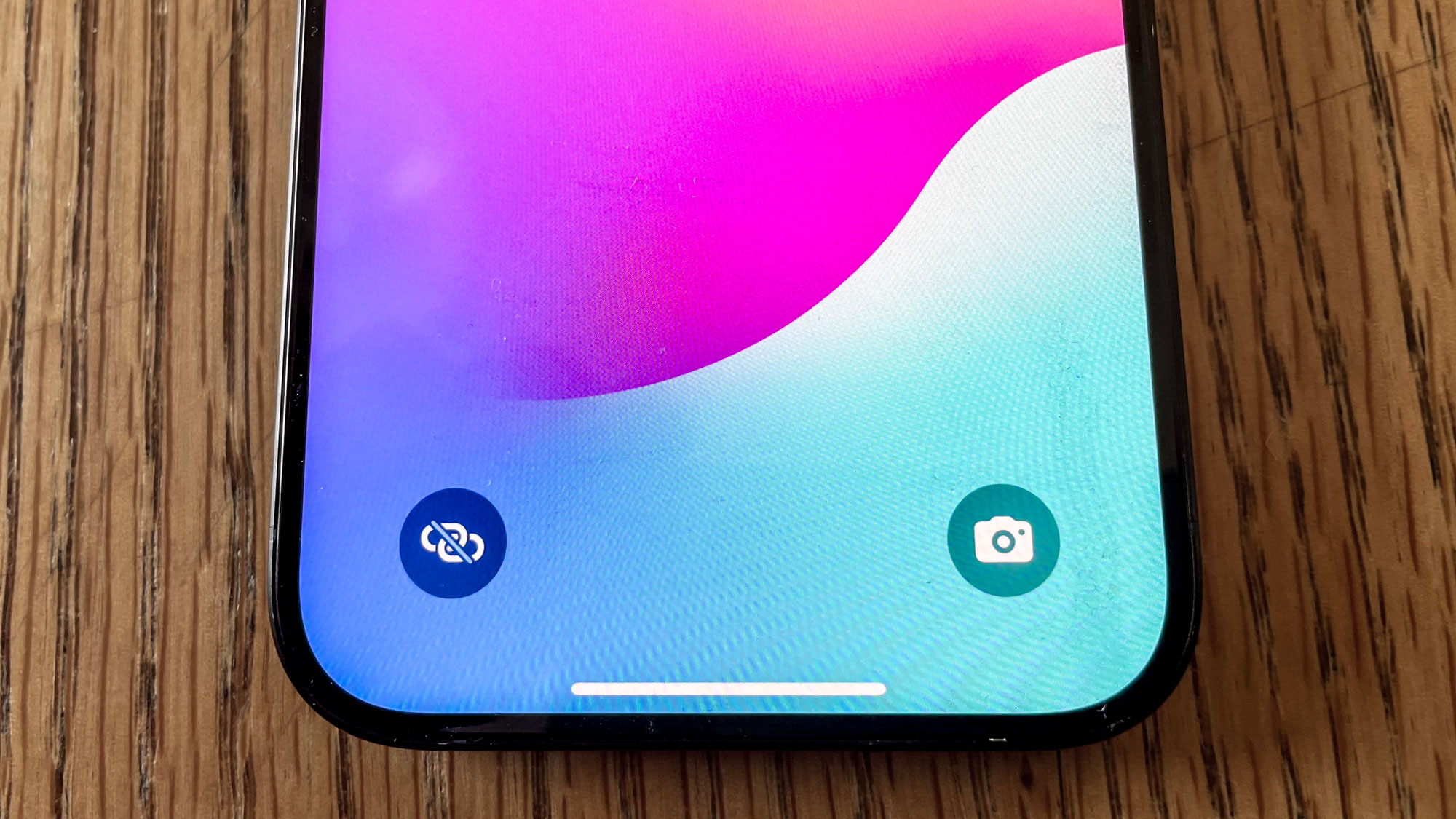
(Image credit: Future)
Road warriors who rely on their iPhone’s network connectivity to keep other devices online will appreciate the ability to add a hotspot control right to their lock screen. Just press Personal Hotspot and your iPhone is ready to use as a hub for any device you want to connect to.
Voice memo
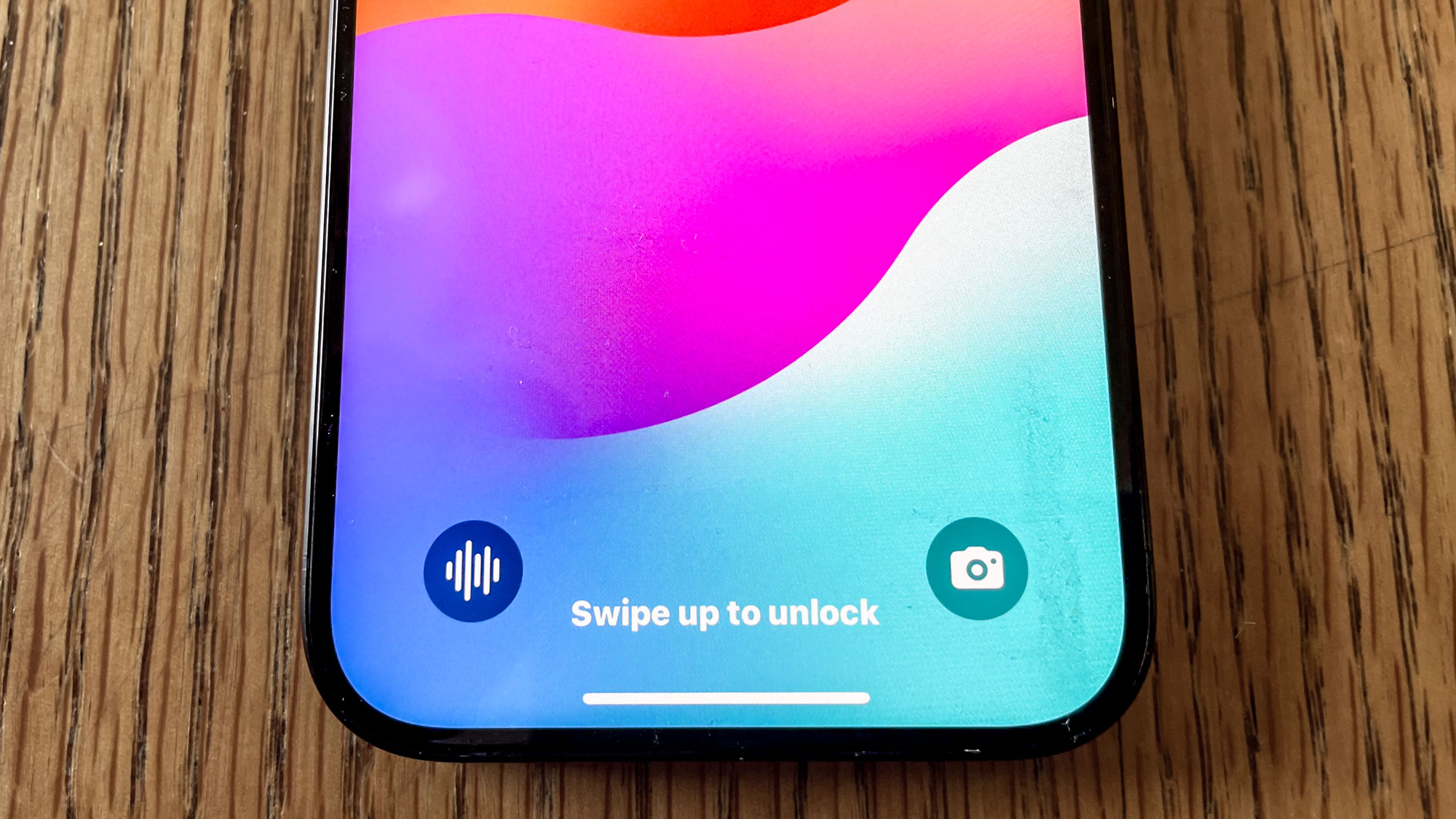
(Image credit: Future)
Sometimes you want to write down an idea as soon as it pops into your head, but you don’t necessarily want to launch the Notes app to start typing. The Voice Memos app is a good alternative because you can quickly dictate a note to yourself so you can review it later when you have time and space to shape your thoughts.
If you have a voice memo shortcut on your lock screen, you don’t even have to unlock your iPhone to start dictating. Pressing the shortcut will immediately start recording. As someone who does quite a bit of interviews, I’ve also found voice memo recording to be a useful way to record those conversations seamlessly, and I imagine it would be useful for meetings and lectures as well.
Ping my watch
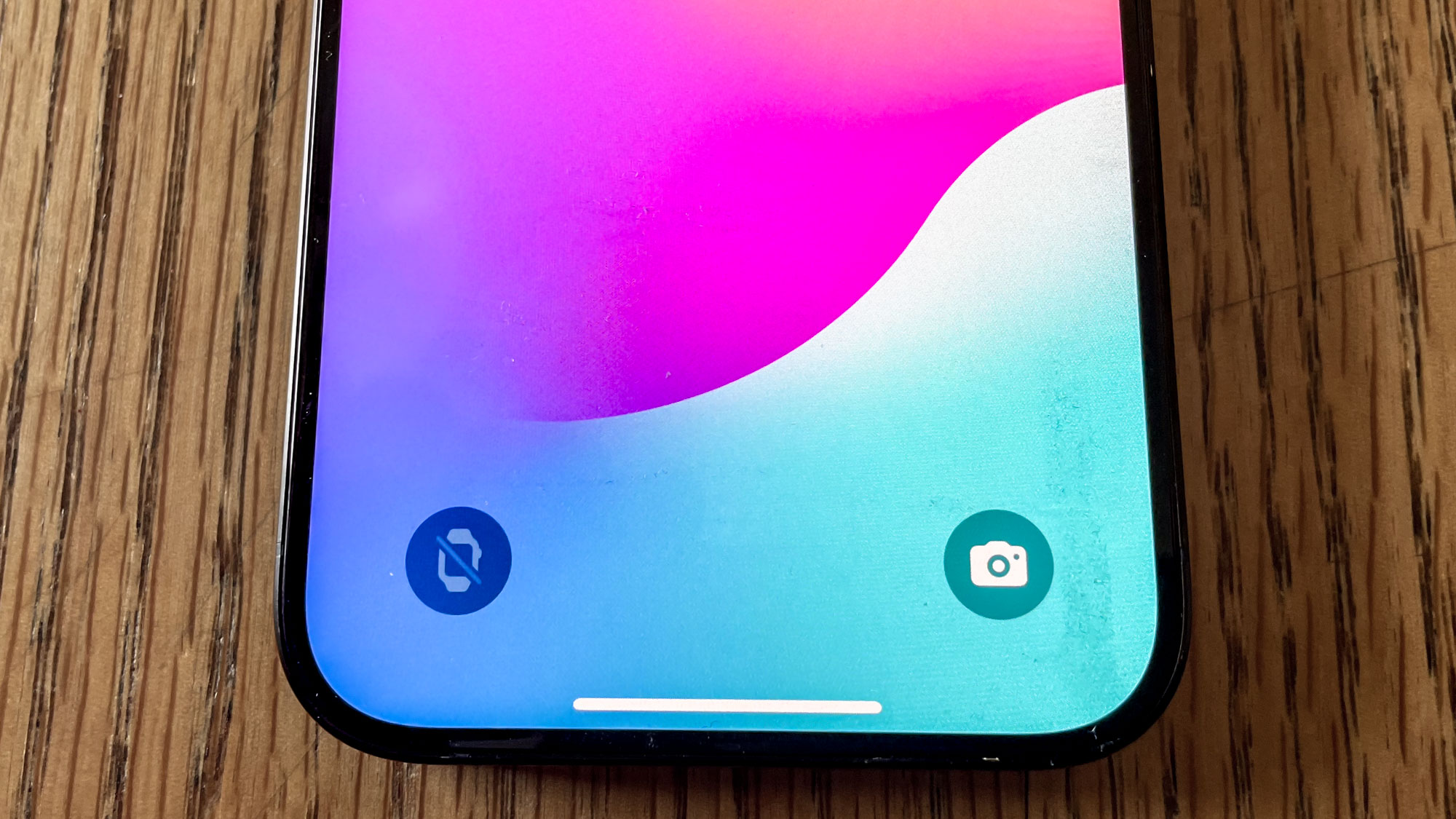
(Image credit: Future)
I am not Apple Watch owner, but if I were, I’d definitely be inclined to include the Ping My Wach shortcut on my iPhone’s lock screen. It’s a useful tool if you’re the type of person who forgets where you left your gadgets. Just press the shortcut and your watch will make a sound to help you find its location.
Magnifying glass
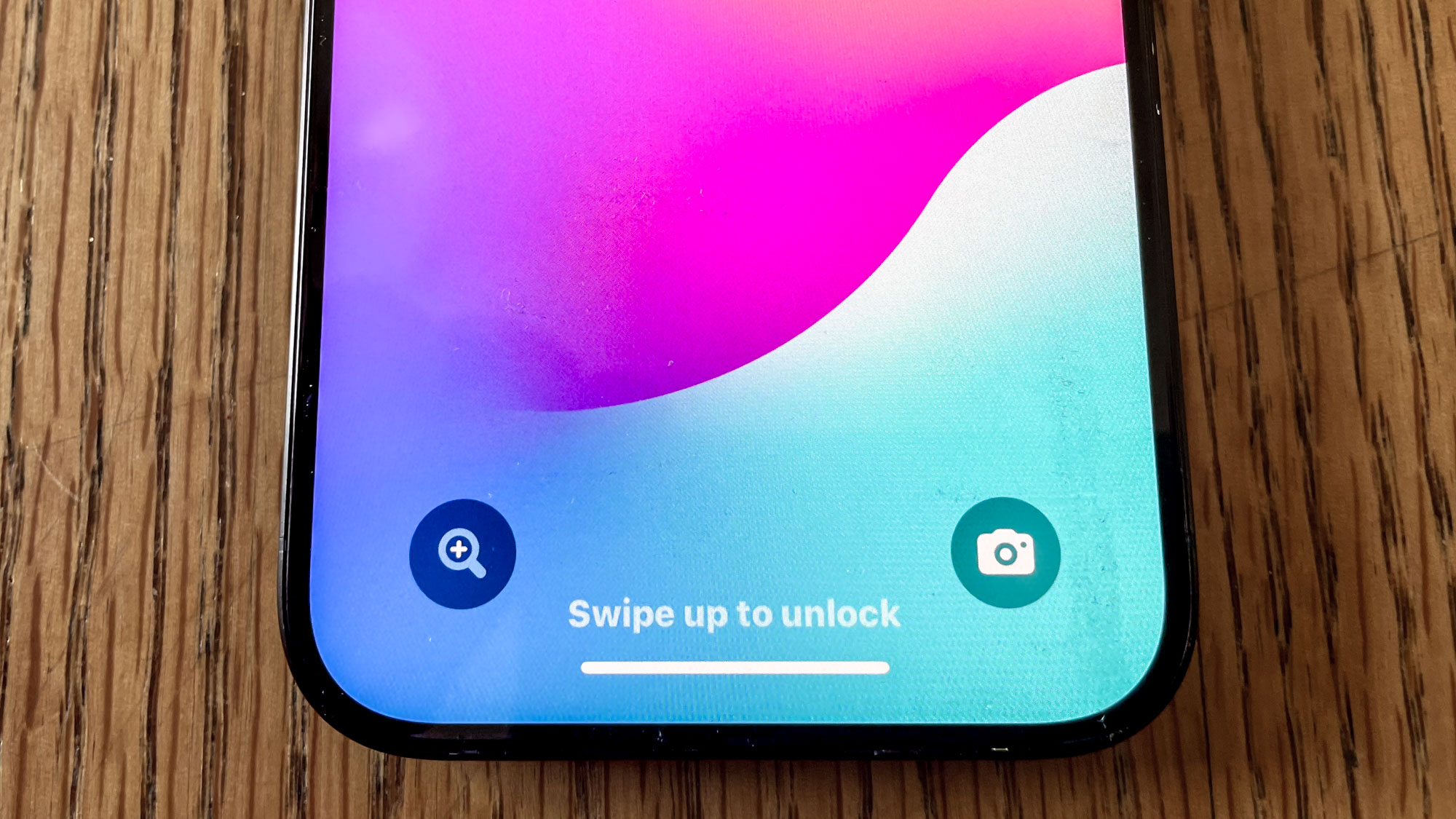
(Image credit: Future)
My eyesight isn’t what it used to be, and everyone seems to be taking advantage of that fact by making the fine print on labels, packaging, and instructions even finer than usual. It doesn’t matter: my iPhone has the Magnifier app that turns the camera into a magnifying glass to help make out that fine print. And now I don’t have to bother unlocking my phone to launch Magnifier.
Instead, there’s a shortcut on the Magnifier lock screen that immediately takes me to the app. It’s under Utilities, but in reality it’s one of many accessibility shortcuts for vision, hearing, and motor functions that Apple lets you place on the lock screen.
Open application
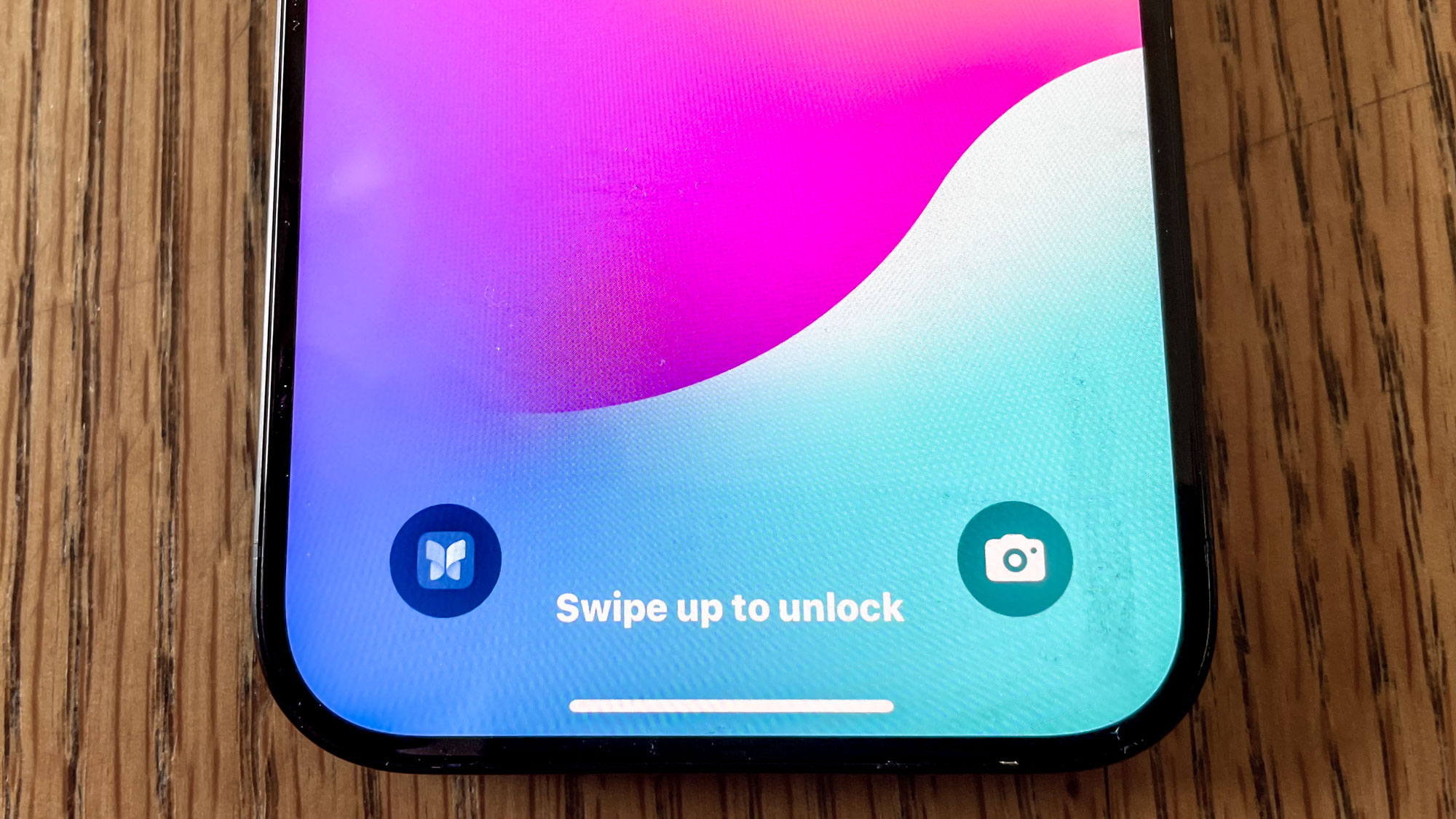
(Image credit: Future)
So far we’ve talked about some very specific shortcuts for your lock screen. But what about a shortcut that allows you to open any app you want, including third-party apps?
That’s the job of the Open App shortcut. Selecting that when you customize your home screen will give you a list of all the apps installed on your phone. Select the one you want to easily open from your lock screen and every time you press that icon it will jump you straight to that app. (The icon on your lock screen looks like the icon of the app you chose — in this example, I’m using Open App to launch the Journal app.) In a sense, it’s like doubling the power of the Action button . if you have an iPhone equipped with that feature.
Leave a Reply